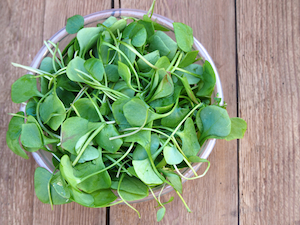
Anyone who’s paying attention knows it’s a very good idea to eat green, leafy vegetables and colorful citrus fruits. Over time, research has shown their association with reducing cancer and chronic disease. In fact, most of us know that we should be consuming multiple helpings of these foods each day.
But which vegetables are best? Fads come and go as quickly as that kale in your fridge. One day it’s broccoli, the next cabbage. And how do you compare the benefits of vegetables versus fruits?
Researchers at William Paterson University in New Jersey have done all of us a big favor by producing a list of “powerhouse fruits and vegetables” ranked by the amounts of 17 critical nutrients they contain.
In a study published in the CDC journal, “Preventing Chronic Disease,” the foods are scored by their content of fiber, potassium, protein, calcium, folate, vitamin B12, vitamin A, vitamin D and other nutrients all considered important to public health.
Atop the list? Watercress – long known as a superfood because it packs large amounts of a wide variety of these important substances, with a score of 100. The next five in the elite category: Chinese cabbage (91.99), chard (89.27), beet greens (87.08), spinach (86.43) and chicory (73.36). The full chart is below.
Here’s the link to the article: http://foodmatters.tv/articles-1/you-ll-never-guess-what-veggie-just-beat-kale
And beware the high oxalic acid content of raw greens. As one commenter wrote: “But, I am confused. After being raw vegan off and on for years, I lived on leafy greens in my smoothies, salads etc. I almost lost all my teeth, apparently due to the extremely high oxalic acid.”
Cooking greens reduces the oxalic acid. Sadly it also reduces other heat sensitive nutrients like vitamin C.
Being well hydrated and a daily dose of omega-3 fatty acids are also very effective in preventing oxalate deposition.
http://www.cdc.gov/pcd/issues/2014/13_0390.htm#table2_down
